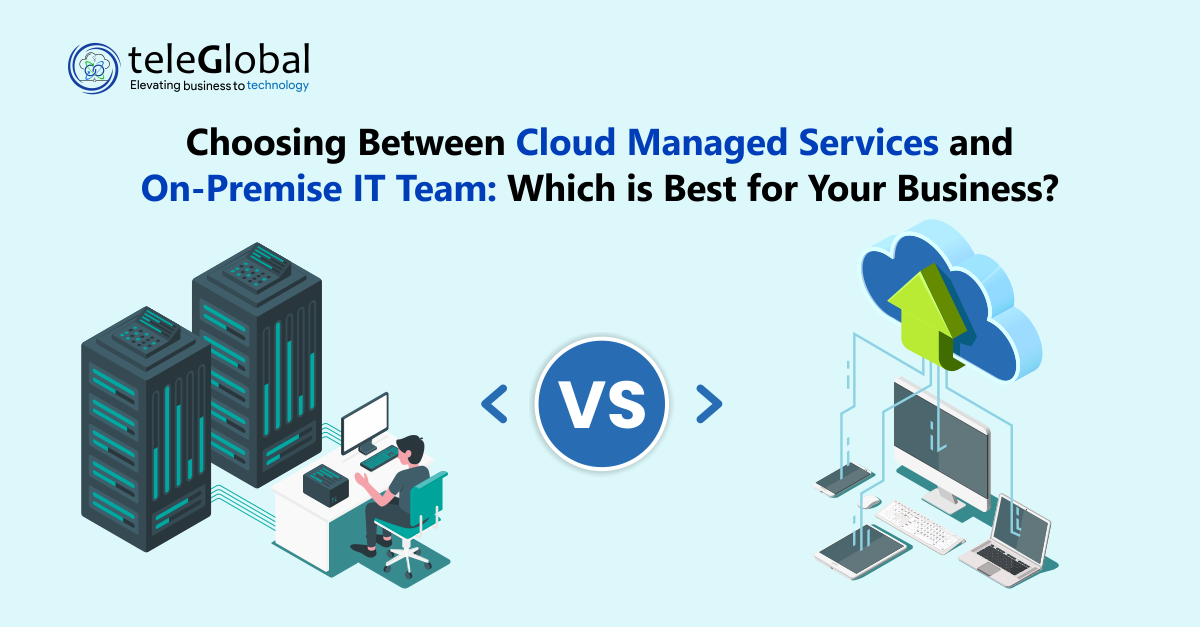
| Author: Ashish Kumar | Published: 17-Feb-2024 |
Choosing between Cloud Managed Services and maintaining an on ‑ site IT Team is a crucial decision facing today’s businesses. Whether you are thinking about cost, security, inflexibility, or scale, opting the right model can shape functional effectiveness and growth. This blog dives into both options actually and helps you decide what really works for your business.
Cloud Managed Services refer to outsourcing the management, operation, and maintenance of your cloud infrastructure and workloads to an external expert, generally an it managed service provider. These providers take care of everything from deployment to security monitoring and managed cloud backup.
An on ‑ premise IT Team is a staff you directly employ on-site who manage servers, storage, networks, and applications within your own physical infrastructure. You have full control, own the hardware, and manage upgrades, backups, and security yourself.
The managed services assiduity is roaring. The global managed services request hit roughly US$ 342 billion in 2024 and is anticipated to exceed US$ 731 billion by 2030, growing at a CAGR of over 13 percent. In 2026, managed cloud services alone are projected to make up around 40 percent of that request. Today, around 84 percent of companies outsource at least one IT function to an MSP.
Notably, some industries are bringing workloads back from cloud into dedicated servers, 42 percent of firms surveyed did so over the past year, largely for compliance and control.
1. Cost Structure
Cloud shifts CapEx to OpEx; on‑premise requires capital investment and ongoing onsite maintenance.
2. Business Size and Growth
For small and medium enterprises (SMEs), MSPs offer access to enterprise-grade IT without heavy investment. Large enterprises might still prefer hybrid or in‑house models.
3. Security and Compliance Requirements
If industry regulations demand tight control (finance, government, healthcare), on‑premise may offer reassurance. Alternatively, MSPs can deliver compliance if certified.
4. Scalability and Speed
Cloud managed services enable rapid provisioning. Spinning up physical infrastructure takes time and capital.
5. Risk and Reliability
Cloud providers usually offer high availability and redundancy. On‑premise requires your own investment in backups, hardware redundancy, and disaster recovery.
6. Strategic Focus
Outsourcing daily operations frees leadership to concentrate on growth and innovation.
Choosing between Cloud Managed Services and an on premise IT team eventually comes down to your business size, growth plans, compliance conditions, and in ‑ house expertise. While the cloud offers inflexibility, scalability, predictable spending, and access to top tier it managed service provider capabilities, on ‑ premise infrastructure still makes sense for organisations demanding full control, nonsupervisory certainty or consistent performance.
At Teleglobal International, we guide organisations through this choice. We help you evaluate your needs, assess the right mix of cloud infrastructure managed services or on‑site staff, and connect you with the best managed service providers suited to your unique goals.
 close
close

Hi there! At TeleGlobal, we turn your cloud vision into AI-accelerated reality. What challenge can we help you solve?
Powered by ![]() teleBot
teleBot